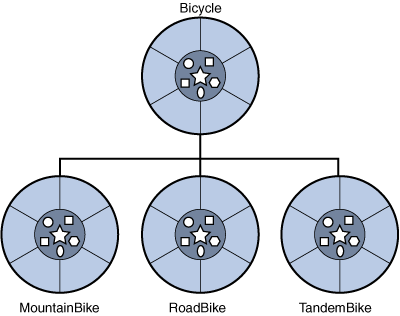What Is Inheritance?
Object-oriented programming allows classes to inherit commonly used state and
behavior from other classes. In this example, Bicycle now becomes the superclass of
MountainBike, RoadBike, and TandemBike.
In the Java programming language, each class is allowed to have one direct superclass, and each
superclass has the potential for an unlimited number of subclasses:

A hierarchy of bicycle classes.
The syntax for creating a subclass is simple. At the beginning of your class declaration, use the extends keyword, followed by the name of the class to inherit from:
class MountainBike extends Bicycle {
// new fields and methods defining a mountain bike would go here
}
MountainBike all the same fields and methods as Bicycle, yet allows its code to focus exclusively on the features that make it unique. This makes code for your subclasses easy to read. However, you must take care to properly document the state and behavior that each superclass defines, since that code will not appear in the source file of each subclass.
